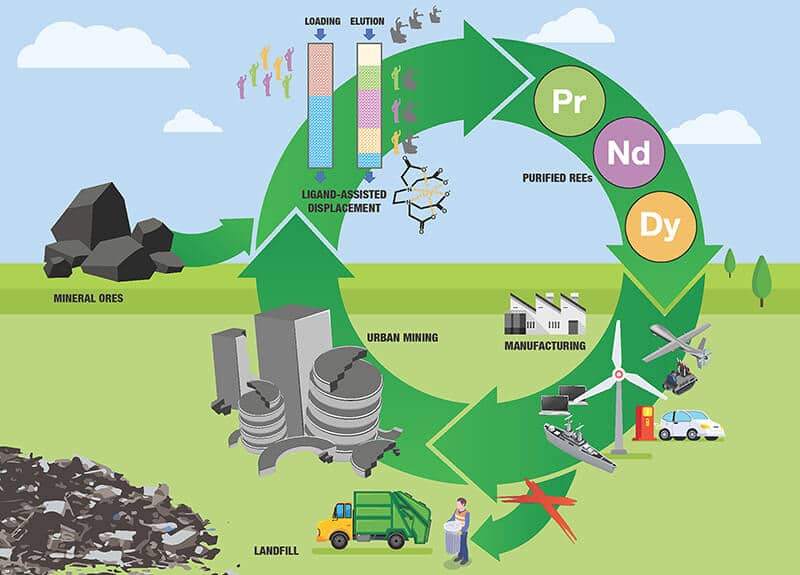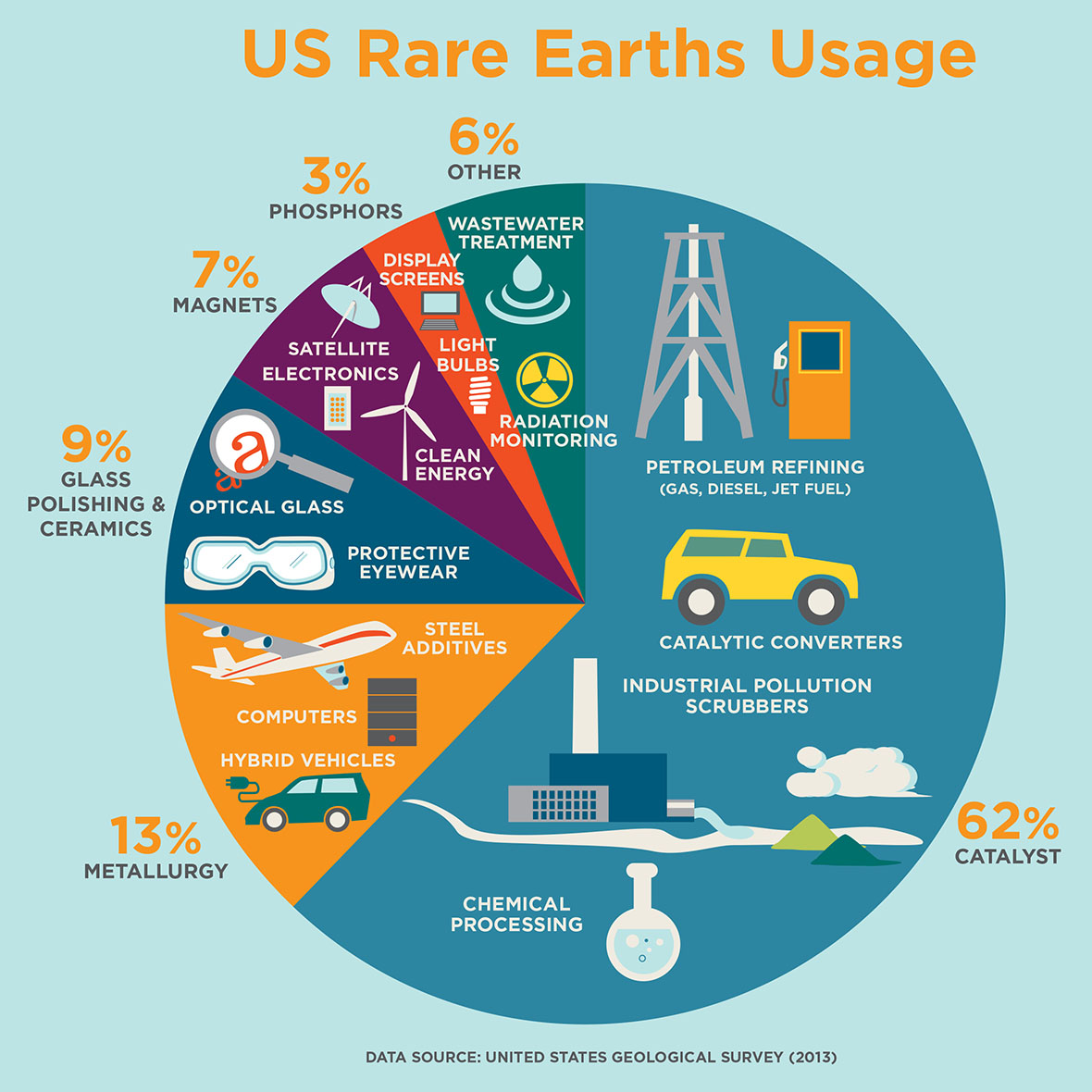As enthusiasts of electric vehicles (EVs), we tend to focus our attention on range, recharge time, speed and other performance indexes. But there’s an overlooked, yet pertinent factor in EV production that needs addressing: the reliance on rare earth elements. These pivotal resources power everything from our smartphones to EV batteries. However, they are not infinite. So, it’s time we understand the significance, potential perils, and alternatives to reliance on these rare elements – especially when it comes to supercharging our EV future.
Understanding Rare Earth Elements in EV Batteries

Under the hood of today’s high-tech electric vehicles (EVs), the magic happens within a sophisticated power pack designed to output hair-raising torque and mileage with zero emissions to boot. The secret sauce behind this magic, on many occasions, can be traced back to a group of seventeen specialized ingredients collectively known as Rare Earth Elements (REEs).
REEs are a suite of 17 chemical elements in the periodic table, specifically the 15 lanthanides plus scandium and yttrium. Their roles are diverse and invaluable. They are the secret performers that enhance the performance, efficiency, and longevity of EV batteries. Some of the common REEs utilized in the EV industry include neodymium, praseodymium, and dysprosium, which are integral components in the production of high-strength permanent magnets used in EV motors.
There is a good reason these elements are deemed ‘rare.’ Their extraction process is complex, requiring technologically advanced and costly procedures. They often occur in combination with other elements, and refining them for use is a laborious and expensive task. Further, while they’re not exactly scarce in the Earth’s crust, finding concentrated deposits commercially viable for mining is far less common.
The battery makes the electric vehicle, and REEs make the battery. Their role cannot be overstated. For instance, some EV manufacturers use magnet-based motors using neodymium, well-regarded for its magnetic property, which improves energy efficiency and thereby enhances the vehicle’s range. Battery technology that uses REEs like lanthanum – common in nickel-metal-hydride (NiMH) batteries – offers superior longevity, making them a popular choice for hybrid electric vehicles.
Yet, it’s important to remember that not all EV batteries employ these elements. Lithium-ion batteries, which power most modern EVs, typically do not require REEs. Instead, they use a combination of nickel, manganese, and cobalt (NMC). However, the role of REEs should not be overlooked as alternative chemistries and technologies continue to evolve and compete in the race to power the EVs of the future.
In summary, as we brace for the predicted EV boom, it becomes clear that these unsung heroes – the Rare Earth Elements – play an important role in the narrative. As unassuming as their roles may seem, their effect on the performance and efficiency of our electric ride is profound, earning them a place in the spotlight.
The Problem: Dependence and Supply Concerns

It’s easy to see the advantages of electric vehicles (EVs)—they’re quiet, clean, and fuel-efficient. However, this new frontier of transportation isn’t without its challenges. Among these challenges, one of the most pressing is the reliance on rare earth elements, which are utilized extensively in the production of EV batteries.
These exotic-sounding substances, often with names that resemble a scrap from a physicist’s notepad—think neodymium, cerium, and lanthanum—come with a raft of difficulties. First off, these are non-renewable resources. Once they’ve been extracted and used, there’s no way to produce more. This brings into sharp focus concerns about the sustainable growth of the EV industry. The batteries that power these green vehicles are, ironically, dependent on materials that aren’t exactly renewable resources.
Furthermore, the existing production and supply chains for these elements present significant problems. At present, the majority of the world’s rare earth elements are mined and processed by China. This means that the burgeoning EV industry is largely at the mercy of a single country’s policies and production levels, which is a precarious situation. In a worst-case scenario, this could lead to price spikes or supply shortages that could disrupt the manufacturing of EVs.
Another aspect of this dependency problem is the environmental impact of mining rare earth elements. Heavy machinery, vast amounts of energy and water, and chemical solvents are required to extract these minerals from the ground. This process substantially increases carbon emissions and the already steep environmental footprint of EVs in the manufacturing stage.
Additionally, the actual extraction process involves a great deal of risk. Some rare earth elements are byproducts of uranium mining, the materials are often found in environmentally sensitive areas, and the extraction process can often lead to considerable pollution. So, even as EVs strive to be a solution to our climate problems, the very building blocks of their power systems could be exacerbating environmental issues.
Accordingly, the EV industry finds itself in a paradoxical situation. As it marches on to curb carbon emissions and reduce reliance on fossil fuels, it becomes heavily dependent on materials with potential supply constraints and environmental conundrums. Breaking this cycle will be paramount in securing a sustainable, greener future for transportation. Cruise over to the next section where we’ll rev up discussions on potential solutions to this intricate problem. Fasten your seatbelts; it’s going to be a ride of innovation and responsible sourcing.
Potential Solutions to Reduce Dependence

The challenge of dependency on rare-earth elements (REEs) in electric vehicle (EV) battery production is intricate, but experts across the globe are employing innovative solutions to address it. Here are a few of them.
First, increasing exploration and production within domestic boundaries is a viable approach. Currently, most REEs are imported, creating an over-dependence on global markets fraught with volatility. Strategic investments in home-grown capacity could bolster supply chains, making them more robust and less exposed to international disruptions.
Next, we have the recycling approach. EV batteries typically have a lifecycle of 7-10 years. So, rather than discarding these “spent” batteries, why not mine them for valuable REEs? While the process is complicated and currently more costly than primary extraction, advancements in technology and economies of scale could make this an efficient and sustainable source of REEs.
Thirdly, research and development into substitutes is expanding. Scientists are exploring alternate materials that could cut down, or even eliminate, the need for traditional REEs. Innovations in battery technology like solid-state batteries, which do not rely on rare earth elements, could be game-changing.
Moreover, another solution lies in the enhancement of efficiency and optimization of use. We can achieve this by making batteries last longer and use fewer REEs or use more abundant alternatives. Such advancements would reduce the overall demand while maintaining or even improving performance.
Last but not least, developing a circular economy for EV batteries could contribute significantly towards a sustainable solution. This concept sees “waste” as an underutilized resource, encouraging the reuse and recycling of materials, thereby reducing the need for virgin materials.
In conclusion, while the challenge is significant, so too are the opportunities for innovation and advancement. Whether it’s mining closer to home, reinventing the recycling paradigm, or developing completely alternate technologies, there are many ways to maneuver around this stumbling block. The directive is clear – we need to lessen our dependence on REEs, ensuring a secure, sustainable future for electric vehicle production.
Enabling Sustainable EV Battery Production

The path toward sustainable EV battery production is akin to staging a moon landing; it’s audacious, requires unparalleled ingenuity and, most riveting of all, it’s perfectly tangible for us to achieve in our age. The trick is not just in conserving the use of rare earth elements, but in ensuring that the entire production process is economical, efficient, and environmentally friendly.
One approach to count plates in this task is to embrace renewable energy in battery production facilities. Fossil fuels currently power much of the battery manufacturing sector. Swapping those with abundant solar or wind energy would significantly shrink the carbon footprint associated with EV battery production. This transition curbs the influence of the combustion vehicle diehards, who’ve argued that the ‘clean’ EV is dirtied by it’s ‘dirty’ battery.
A more sci-fi-esque approach, but one that’s steadily nearing reality, involves mining asteroids or the ocean floor for rare earth elements. However, the potential ecological impacts of these methods are still largely unknown and regulations governing these adventurous exploits are scarce, to say the least. While these methods might offer ways to sidestep terrestrial politics and conflicts, the scientific community still needs to perform due diligence before we boldly mine where no man has mined before.
To truly realize sustainable EV battery production, we desperately need to improve battery recycling. Currently, around 50% of battery grade lithium is recovered through recycling. Cobalt and nickel fares slightly better with roughly 90% recoverability. These figures need to be propelled closer to 100%. Researching more efficient recycling techniques while encouraging battery return programs can elevate the value retrieved from end-of-lifecycle batteries. Instead of perceiving used EV batteries as garbage, imagine them as mines, rich with valuable material, waiting to be tapped.
A more holistic look at EV sustainability will also consider the entire lifecycle of the battery. Research is already providing insight into extending battery life, lessening the need for new batteries to be produced. By innovating Smart grids, vehicles might one day provide storage capabilities for renewable energy, long after their on-road life has ended.
Ultimately, enabling sustainable EV battery production is a multifaceted process that will require continued innovation and refinement. Amidst all the complexity, one fact remains clear: the race toward sustainable EV battery production isn’t an option, it’s a necessity. For the sake of our blue dot and its future inhabitants, here’s to hoping that the electric vehicle industry gets there sooner rather than later.
FAQs
What is the issue with Rare Earth Elements (REE) in EV Batteries?
Why are Rare Earth Elements essential for current EV technology?
Can we replace Rare Earth Elements in EV Batteries?
Conclusion
Addressing the rare earth elements challenge in EV batteries is indeed a significant step towards sustainable electric mobility. Innovations are spawning daily, and it’s only a matter of time before we effectively sideline these elements. Through focused research and multi-pronged technological advancements, manufacturers will inevitably solve this complex puzzle. Thus, the future of electric vehicles remains on a promising trajectory — one that balances efficiency, performance, and environmental stewardship with aplomb.
